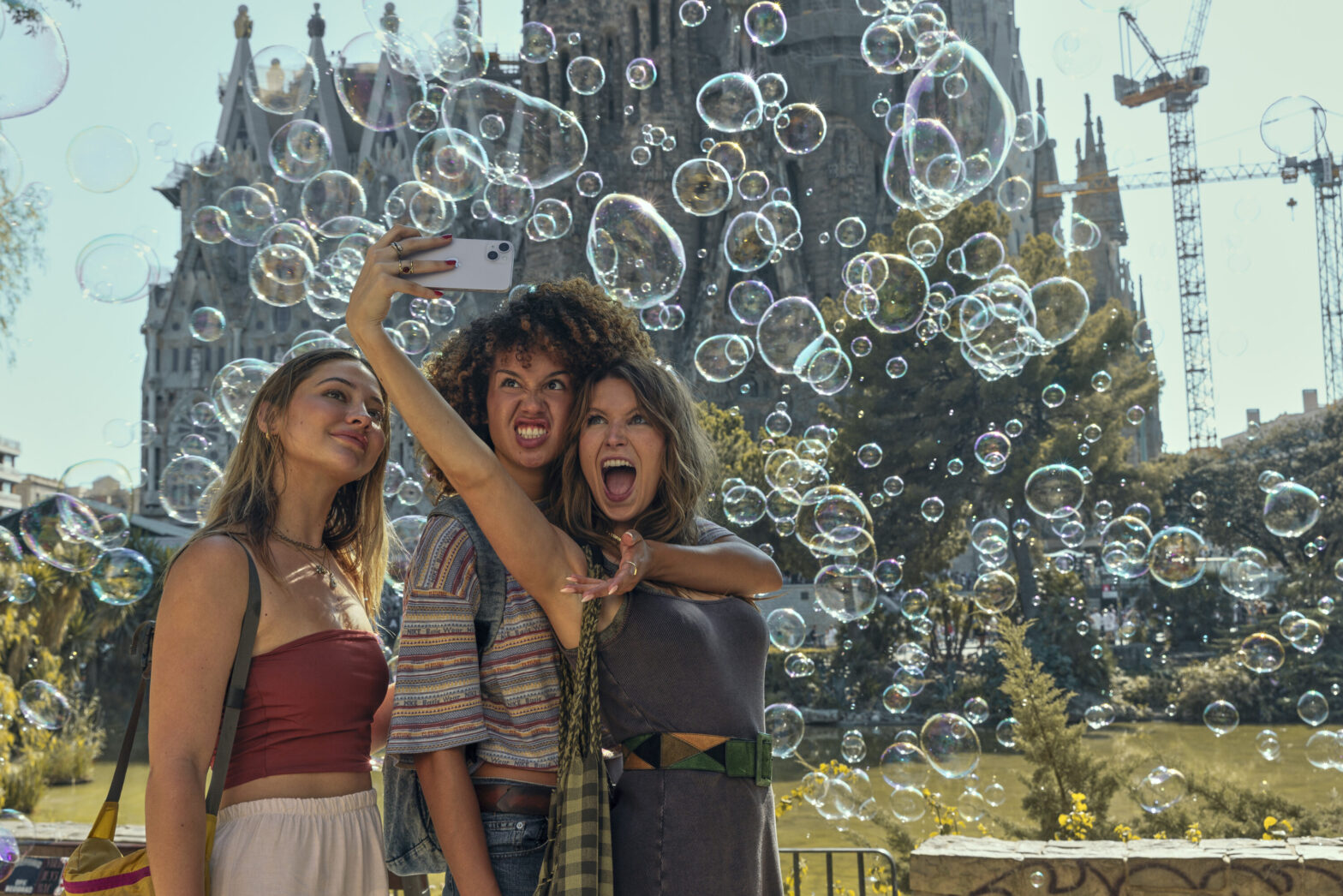I travel the world but rarely go home. I have vague, surreal memories of my time in Nigeria as a toddler. I have vivid, recent memories of my sister’s wedding, but no memories of exploring Nigeria as an adult who studies and adores the country from afar.
Although my primary reasons for being in Nigeria this summer was to conduct research on literature, human rights and national identity for my Master’s thesis and to be in a Yoruba language immersion program, I decided that I would be a student of all things – led by humility and an unwavering curiosity for the unknown.
My journey started in Lagos, where I had one of the most emotional and educational experiences of my trip. Before I left the United States, I decided that I would visit sites associated with the transatlantic slave trade during my time in Nigeria. I felt that this was important given that I have visited such locations in the United States and Brazil, but none in my own country.
Remnants of Slavery

I went to the compound of Seriki Williams Abass (born Ifaremilekun Fagbemi) – a Nigerian man who was sold into slavery twice and then, after being freed, returned to Nigeria where he collaborated with slave masters and became a slave merchant himself. His compound has 40 tiny cells – each cell held 40 enslaved people for 3-4 months.
Overwhelmed with grief and confusion, I realized that I would never be able to comprehend the circumstances that led a man who lived the horrors of slavery – twice – to inflict that same horror on others. He sent enslaved Nigerians to Brazil – the same country where he had been enslaved. The details deepened the wound. I learned that he once exchanged 40 people for an umbrella – an umbrella that was used only as a sign of social status. I saw the tiny mirror that he received in exchange for 20 people and asked myself – is seeing your reflection worth more than attempting to rid 20 people of theirs?
I carried my unanswered questions with me on a boat to Gberefu Island. I walked to a well where it is believed that enslaved people were forced to drink a liquid that temporarily made them forget their identities. Alongside the well, there is a burial ground for those who refused this command.
Those who survived were taken to “the point of no return” where they were forced into ships – a point where most survivors took their last glimpse of Africa.
I retraced the footsteps of over 550,000 people who were sold into slavery. Each step felt like a funeral.
History—Past & Present
I carried this sadness with me to the Bring Back Our Girls Lagos chapter’s weekly meeting. I learned about the 112 schoolgirls that are still missing. I also learned that this group had met every weekend since the girls were kidnapped in April 2014, with some members traveling hours to be there. I heard them share heartfelt comments on their efforts and the obstacles they have faced over the past four years. As they spoke, I reflected on the global momentum around the movement in 2014 and how that energy has dwindled today. Still, I looked at this multigenerational group who have remained dedicated to this cause and saw several candles amidst the darkness.
I carried these heavy feelings with me to the Osun-Osogbo Sacred Grove – the home of the orisa (spirit) Osun. The area is populated with shrines and statues that are connected by winding paths and water. While standing in the grove, I felt a deep sense of peace. I was both alone and surrounded. It is rare for me, as a Black woman, to be able to stand in a seemingly empty space and feel secure – comforted by a presence unseen, but undeniable. I walked every path in the forest until I circled back to the beginning, feeling baptized.
Truthfully, my time in Nigeria was a continuous baptism. All of my most significant experiences revolved around water. Climbing Olumo Rock, an enormous outcrop of granite rocks in Abeokuta (my paternal hometown), felt like an ascent to my ancestral plane. Olumo has a dual-meaning “God molded” and “God put an end to our suffering.” In 1830, Olumo Rock served as a refuge for Egba people who were fleeing from war. After they consulted the Ifa Oracle, they believed that this rock was their safe haven, which gave them the confidence to live under this rock for three years. The city “Abeokuta” literally means “under the rock.”
People still live under the rock to this day – including Iya Orisa who claims to be 133 years old. There are shrines and sacrifices given to the orisa of the rock. People still climb the rock to touch its holy water.
I also bathed in the sacred waters of the Olumirin waterfall in Erin Ijesha. These waterfalls were discovered in 1140 AD by migrants from Ile-Ife who walked for seventeen days in the hope of finding a new home. At first, they were fearful of the waterfall but when they learned that it was a manifestation of God, they immediately settled and began to worship.
Yoruba religion
My encounters with the Yoruba religion were important given the new course of my spiritual journey. It has been a time of questioning. I am in the process of distinguishing between my beliefs as an adult and the beliefs I inherited as a child. While there is some overlap, there are also critical differences. The journey has been a project in understanding my own concept of God.
As I have been contemplating these deep questions, I have been increasingly drawn to the Yoruba religion. As a child, the images that I saw of the Yoruba religion centered on demonic possession, curses and blood sacrifices. I was ignorant of how Yoruba spirituality is woven into the fabric of my homeland and that by understanding the beliefs of my ancestors, I can develop a better understanding of myself. In Nigeria, I was drawn to the power that I saw devotees of Yoruba religion embody. Seeing them masterfully handle fire, water, and air made me believe that I am also in possession of such magic. The magic of heightened intuition, the magic of healing, the magic of summoning. Weapons against daily acts of violence. Weapons that I was born with. Weapons that have been waiting to be discovered.
Culture
Beyond the parts of my trip that were overtly educational, I also went out and enjoyed myself. I went to Fela’s New Africa Shrine twice, I watched the World Cup with a bar full of passionate Nigerians, and I went out to lounges that made me feel like a big spender, but in actuality, I was spending the equivalent of $5.
I scouted out natural hair salons and had fantastic experiences at Lumo Naturals (Abuja) and Jenniks Salon (Abuja). I observed the art of gele tying and wore mine like a crown.

But more than anything, I valued having one-on-one conversations with various people. From interactions with my auntie who taught me how to pound yam in Ilorin, to discussions with my host-brother in Ibadan about his impressions of America, to hearing about the struggles that propelled people to leave Nigeria and the love that encourages people to stay.
There were days where we had no electricity. I sat in darkness and had conversations with myself. I thought about my status as the children of migrants and what it meant to occupy a liminal place between being Nigerian, British and American. I thought about the different ways that people in Nigeria may perceive me, and I thought about how I see myself. In my case, I have dealt with the emotions of not feeling “Nigerian-enough,” which led me to sometimes feel that I needed to prove my “Nigerian-ness.” In the end, I stopped considering external perceptions and I chose to see myself with my own eyes. I recalled the words of Audre Lorde who said:
“If I didn’t define myself for myself, I would be crunched into other people’s fantasies for me and eaten alive.”
One of the best decisions that I made on this trip was to define myself, for myself.
—————–
This post was written by Catherine Labiran and originally appeared on CatherineLabiran.com.
Want to share your travel story? Check out our community submission form HERE.





